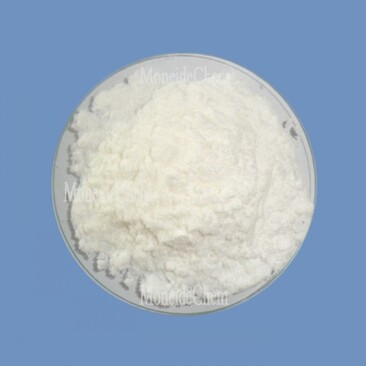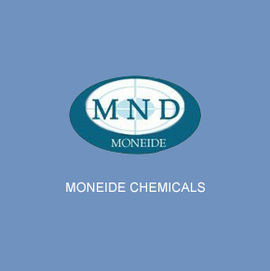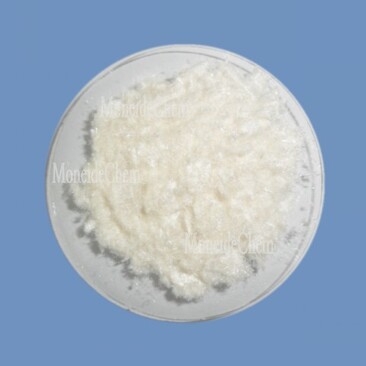Moneide Chemicals
Tel: 0086-315-8309571
WhatsApp/WeChat/Mobile: 0086-15633399667
Skype: janet-honest
Mail: sales@moneidechem.com
Address: 2-7-523 Jidong Building Materials Commercial Center, Tangshan, Hebei 064000 China
Advanced Techniques and Chemicals in Electroplating Processes
- Time of issue:ມ.ຖ. . 09, 2025 13:42
(Summary description)Tangshan Moneide Trading Co., Ltd. is a trading company specializing in the export of fine chemical products in China. Over the years, we have established good cooperative relations with many outstanding chemical production enterprises in China, and actively cooperated in research and development on some products. Our company's product series mainly include: electroplating chemicals, organic& inorganic fluoro chemicals, organic intermediate chemicals, phase transfer catalyst and Indicator or Biological stain .
- Categories:Company dynamic
- Author:
- Origin:
- Time of issue:2019-12-30 10:55
- Views:
In the realm of surface finishing and metal treatment, electroplating stands as a pivotal process for enhancing the properties of various materials. A range of specialized chemicals and methods are employed to achieve desired coatings, with precision and efficiency being paramount. This exploration delves into key processes and substances within electroplating, including those related to potassium cyanide electroplating, removing zinc plating with muriatic acid, silver nitrate plating, silver plating brightener, and silver plating with silver nitrate, uncovering their roles and applications. Potassium cyanide electroplating is a technique historically utilized for its ability to create uniform and adherent metal coatings, particularly for metals like gold and silver. The cyanide ions in potassium cyanide form stable complexes with metal ions, allowing for controlled deposition onto the substrate. This method is valued for its consistency in producing thin, high - quality layers, which is crucial in industries such as jewelry making and electronics. However, due to the toxicity of cyanide, strict safety protocols and waste management practices are essential when implementing potassium cyanide electroplating. Modern alternatives seek to balance effectiveness with reduced hazard, but the technique remains relevant for specific high - precision applications where its unique advantages are unmatched. When it becomes necessary to strip zinc plating from a substrate, removing zinc plating with muriatic acid (hydrochloric acid) is a common approach. Muriatic acid reacts with the zinc layer, dissolving it while leaving the underlying material intact, provided the base metal is not reactive to the acid. The process involves immersing the plated object in a diluted acid solution, allowing the chemical reaction to break down the zinc coating. It is important to control the concentration of the acid and the immersion time to prevent damage to the substrate. Removing zinc plating with muriatic acid is widely used in metal reworking and recycling, enabling the reuse of components or the application of new coatings after stripping. Silver nitrate plating is a method that utilizes silver nitrate solutions to deposit a thin layer of silver onto a substrate through electrochemical or chemical means. Silver nitrate, as a soluble silver salt, provides a source of silver ions that are reduced to form the metallic coating. This technique is popular in decorative applications, such as plating jewelry, cutlery, and decorative objects, due to silver’s lustrous appearance. Additionally, in electrical engineering, silver nitrate plating may be used to enhance conductivity on components. The process requires careful control of pH and solution composition to ensure uniform deposition and prevent unwanted reactions that could compromise the coating’s quality. A silver plating brightener is an additive used in electroplating baths to improve the appearance and performance of silver coatings. These compounds work by modifying the electrodeposition process, promoting the formation of a smooth, shiny, and microscopically uniform layer. Without a brightener, silver deposits might appear dull or rough due to irregular crystal growth. In industrial settings, silver plating brightener is essential for achieving the high - quality finishes demanded by the jewelry, automotive, and electronics industries. The selection of the appropriate brightener depends on factors such as the plating method, solution composition, and the desired final properties of the coating, balancing brightness, hardness, and corrosion resistance. Silver plating with silver nitrate involves using silver nitrate as the primary source of silver ions in the plating bath. This method can be applied in both electrolytic and electroless plating processes. In electrolytic plating, an electric current drives the reduction of silver ions onto the cathode (the substrate), while electroless plating relies on chemical reduction without external current. The purity of the silver nitrate and the stability of the plating solution are critical for consistent results. Silver plating with silver nitrate is favored for its simplicity and the high purity of the deposited silver, making it suitable for applications where conductivity, reflectivity, or aesthetic appeal is paramount. Proper maintenance of the plating bath, including regular filtration and pH adjustment, ensures the longevity and effectiveness of the process. When working with potassium cyanide electroplating, safety is of utmost importance. Cyanide is highly toxic and requires strict handling protocols, including the use of personal protective equipment (PPE), proper ventilation, and emergency response plans for spills or leaks. Wastewater containing cyanide must be treated to detoxify it before discharge, often through chemical oxidation processes. Training all personnel involved in the process and adhering to regulatory standards are essential to minimize risks associated with cyanide - based plating. For removing zinc plating with muriatic acid, it is crucial to ensure that the underlying substrate is resistant to hydrochloric acid. Metals such as steel or iron are generally compatible, but more reactive metals like aluminum or zinc itself (on other substrates) may be damaged. Testing a small, inconspicuous area of the substrate before full immersion can help prevent unintended corrosion or surface degradation during the stripping process. To achieve optimal results with silver nitrate plating or silver plating with silver nitrate, maintaining the plating bath is essential. This includes regular analysis of silver ion concentration, pH adjustment, and removal of contaminants. Adding brighteners or other additives as needed can enhance coating quality, while proper temperature control ensures consistent deposition rates. Regular maintenance prolongs the bath’s effectiveness and reduces the likelihood of defects in the plated layers. Choosing the right silver plating brightener involves considering the specific requirements of the application. Some brighteners are designed for high - gloss finishes, while others may prioritize hardness or resistance to tarnish. Compatibility with the plating bath’s chemistry, including pH and other additives, is also important. Conducting small - scale trials with different brighteners can help identify the most suitable option for achieving the desired coating properties efficiently. In processes like silver plating with silver nitrate, common issues such as dull coatings, uneven deposition, or poor adhesion can arise. Dullness may be addressed by adjusting the brightener concentration, while uneven deposition often results from improper current distribution or substrate preparation. Ensuring the substrate is clean, free of oils or oxides, and properly activated before plating is key to preventing adhesion problems. Regular monitoring of process parameters and bath conditions helps identify and resolve these issues proactively.
Potassium Cyanide in Electroplating Processes
Removing Zinc Plating with Muriatic Acid
Silver Nitrate Plating for Decorative and Functional Coatings
Enhancing Silver Coatings with Silver Plating Brightener
The Process of Silver Plating with Silver Nitrate
Key Considerations in Electroplating Practices
Safety Measures for Potassium Cyanide Use
Substrate Compatibility in Acid Stripping
Optimizing Silver Nitrate Plating Baths
Brightener Selection for Silver Plating
Troubleshooting Common Plating Issues



























